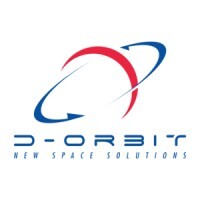Just like there’s too much junk on Earth, we’re sending up too much junk into space now too. As private enterprise gains more access to space, even more satellites are launched up there — taking up space. It’s a real problem with the potential to get worse as businesses have greater interest and access to get their gear into space. Bruno Carvalho, the Director of D-Orbit, contends that the answer is better space logistics in order to support space sustainability.
Main Takeaways
- Space Sustainability: Space is filling up fast. The concern for space collisions and the dangers of debris is real. Sustainable solutions concerning satellites must be developed and implemented because their numbers will only be increasing.
- Space Taxis: D-Orbit has essentially developed a space taxi system to put satellites in their final orbital positions. These taxis can have additional applications after they have completed their taxiing missions. For instance, this sort of vehicle could perhaps be used to pick up space refuse. They also relay important alert information back to Earth more quickly.
- Partnering with AWS: Partnering with AWS enables D-Orbit, like many companies, to reduce its own need for infrastructure. Also, the use of the AWS Ground Stations help reduce delay by increasing the speed at which D-Orbit can access its data via the cloud.
For a more in-depth look at this episode, check out the article below.
Article Notes
Just like there’s too much junk on Earth, we’re sending up too much junk into space now too. As private enterprise gains more access to space, even more satellites are launched up there — taking up space. It’s a real problem with the potential to get worse as businesses have greater interest and access to get their gear into space. Bruno Carvalho, the Director of D-Orbit contended that the answer is better space logistics in order to support space sustainability.
“Because we need to clean up and sustainable use of space is one of the things that triggered D-Orbit going into logistics,” Carvalho said. “You have to manage the space around us. And by around us, I mean Earth and we;re now looking into Lunar space and beyond, and manage that to be sustainable for future generations.”
On this episode of IT Visionaries, Carvalho explained how D-Orbit has created space taxis to move satellites into their final positions. He also described how these taxis may have other useful applications after they are deployed in space. Carvalho chatted about D-Orbit’s partnership with AWS. He also shared how D-Orbit has created the D-Orbit Academy to attract and develop new talent.
Carvalho provided a helpful metaphor to explain how D-Orbit helps put satellites in their final position.
“Imagine that rocket is the bus service,” Carvalho said. “You typically go from between two cities, either on a train or on a bus, but then you reach the train station or the bus station, and you still need to get home. So you’ll call a taxi or hop into something smaller that will transport you to the final destination. We are providing that taxi service. We launched with, for instance, SpaceX. We were in their first Transporter-1. They beat the record of number [of] satellites on a single launcher. 143 if my memory serves me right. And of those 143, they left into the, say, train station. So what happens next is that we are the taxi service that is going to deliver the ones that are inside our vehicle into their final orbital positions.”
Once the taxis are in space, they can have other useful applications.
“The same taxi that will deliver stuff in space can be used to then pick up other garbage or other things,” Carvalho said. “And there are several experiments…being thought through from harpoons to fishing nets to robotic arms. It’s an interesting problem and it’s a challenge because it’s a harsh environment. It’s controlling. It’s three dimensional, [and] not necessarily with cooperative targets [and] approaching them [and] making sure that you don’t collide.”
In part, through a partnership with AWS, D-Orbit is beginning to bring the cloud’s capacities into space.
“To be honest, I hope that people are not limited by my own imagination, because I think we don’t know what the future holds,” Carvalho said. “What we are trying to provide is the infrastructure and the capability for people to use. [It’s] a bit like the spare capacity in computing power that Amazon had when they made it available for web services. They didn’t know what people were gonna deploy. So we don’t know either, but we have some ideas. Because if you think about going beyond Earth orbit; if you think about going to the moon and to asteroids and to Mars, then you start looking into deploying capabilities in those local environments. You want to minimize lagging communication. You want to maximize the bandwidth that you have available within that local infrastructure. So it’s creating that capability that’s required.”
The future in space is only beginning to be written today. The next chapter will be written by those who are willing to consider possibilities beyond the current paradigm.
“I’m passionate about space, so it’s really cool to be doing things that nobody else is doing,” Carvalho said. “I don’t like the expression outside of the box, but I was thinking about [that, in this case, the saying concerning the work could be] outside of this world.”
To hear more about how D-Orbit is laying a sustainable foundation for space logistics, check out the full episode of IT Visionaries!
IT Visionaries is brought to you by the Salesforce Platform – the #1 cloud platform for digital transformation of every experience. Build connected experiences, empower every employee, and deliver continuous innovation – with the customer at the center of everything you do. Learn more at salesforce.com/platform





